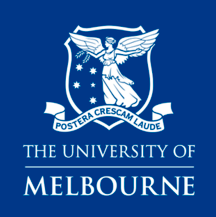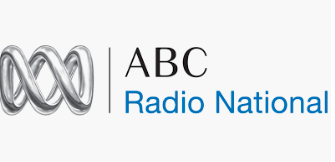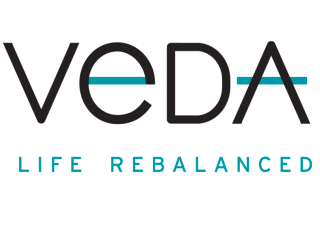The Success Rates of ROCK STEADY: Our Research Data
On this page we are displaying an active research project that will grow over time. The results so far show that symptom progress scores are significantly improving for participants completing the six modules of ROCK STEADY®.
Improvements were seen regardless of age, gender, diagnosis or time since onset of symptoms for participants with chronic symptoms who were unresponsive to tradtional treatments (see figures 1 to 8 below).
What do Current ROCK STEADY Participants Say?
Out of 146 participants in this research projoect, 72 (49%) returned to normal emotional, functional and positional capacity after completing all six Modules of the ROCK STEADY online program.
97% of these participants recommend the program to others suffering with vertigo or tinnitus.
Is there benefit in ROCK STEADY?
For preliminary results to answer this question we tracked 146/439 (33%) ROCK STEADY participants who completed both pre- and post- ROCK STEADY Questionnaires. We found that there were statistically significant improvements in all areas of life (see graphs below). These participants volunteered to complete questionnaires while undergoing ROCK STEADY. The only requirement was that they complete an initial questionnaire and a final questionnaire after completing Module 6 between the dates 1 October 2018 and March 30, 2020.
The 146 participants we tracked had a spread of diagnoses including persistent benign paroxysmal positional vertigo (BPPV), Meniere’s, Persistent Postural Perceptual Dizziness (PPPD), Mal Debarquement, tinnitus, hearing loss, labyrinthitis, neuronitis, vestibular migraine or medical clearance without a specific diagnoses. Of these 146 participants, 115 were female and 31 male.
The age range was 18 to 74 years old with 2/146 (1%) age 18-24, 23/146 (16%) age 25-34, 27/146 (18%) age 35-44, 31/146 (21%) age 45-54, 42/146 (29%) age 55-64, and 21/146 (14%) age 65-74.
These participants had experienced symptoms in a range from 0-6 months up to more than 10 years. In this group 26/146 (18%) had symptoms 0-6 months, 20/146 (14%) had symptoms for 6-12 months, 41/146 (28%) had symptoms 1-3 years, 32/146 (22%) had symptoms 3-5 years, 9/146 (6%) had symptoms 5-10 years, and 18/146 (12%) had symptoms 10 years or more before starting ROCK STEADY.
Prior to beginning ROCK STEADY, 99/146 (68%) of these participants had tried medications from their GP, or 70/146 (48%) had tried medication prescribed by their specialist doctors, 94/146 (64%) had tried vestibular physiotherapy, 32/146 (22%) had tried regular physiotherapy, 63/146 (43%) had tried the Epley manoeuvre, and 99/146 (68%) had tried a range of alternative therapies prior to beginning ROCK STEADY.
These 146 participants chose to enrol in ROCK STEADY because they were seeking specific online tools that they could use in their own time to help them understand how to heal symptoms with neuroplasticity. Their symptoms had been unresponsive to previous treatments or therapies.
Of these 146 participants, 43/146 (29%) say they practised their daily exercises at home 15 minutes or more a day, 60/146 (41%) say they practiced 5-15 minutes each day, 41/146 (28%) say they practised intermittently rather than daily while undergoing the ROCK STEADY program, and 2/146 (1%) stopped their neuroplasticity exercises.
The 6 modules of self-study were completed within a timeframe of 7 weeks to 12 months. The median time taken to complete the 6 Modules was 91 days (~3 months) and the average time taken was 149 days (~5 months) showing that many users benefited from a slower self-study pace.
Participants who completed all six modules show an average overall improvement of 65% since using the ROCK STEADY tools.
OVERALL PERCEIVED IMPROVEMENT
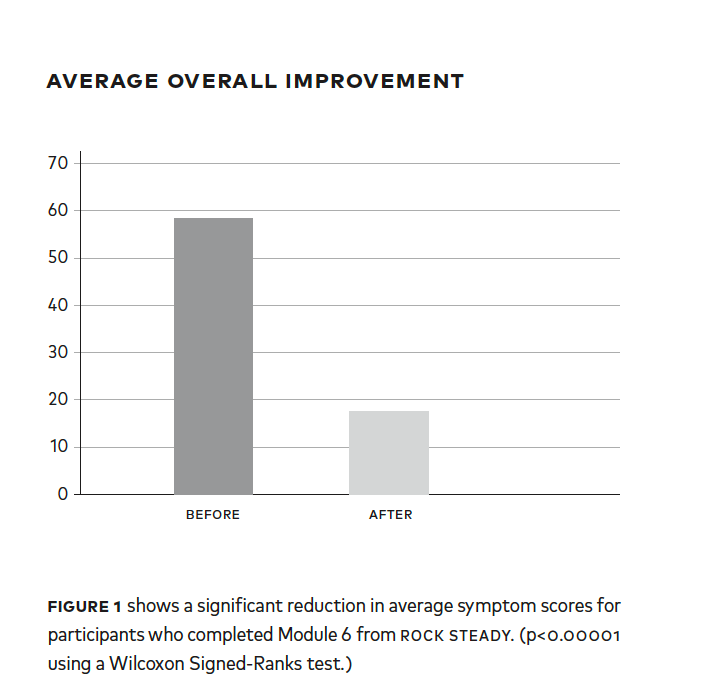
To calculate improvements we tracked a perceived symptom score. A maximum score of 100 indicates that symptoms are perceived 100% of the time in emotional, functional and positional situations. A score of 16 or less is considered within normal limits.
The average symptom score for people prior to commencing ROCK STEADY was 58.3 (18.3) with a median score of 59. This means that on average participants reported disability relating to symptoms 58.3% of the time in functional, emotional or positional situations.
The average perceived disability score for participants who completed ROCK STEADY reduced to only 20.5 (15.4) with a median score of 18.
This means that after completing the ROCK STEADY online program they had a significant reduction in perception of symptoms. In fact, this research showed a highly statistically significant reduction in their perception of symptoms (Z=-10.4, p<0.00001) using a Wilcoxon Signed-Ranks test.
Improvements were seen regardless of age, gender and diagnosis.
EMOTIONAL, FUNCTIONAL & POSITIONAL IMPROVEMENTS
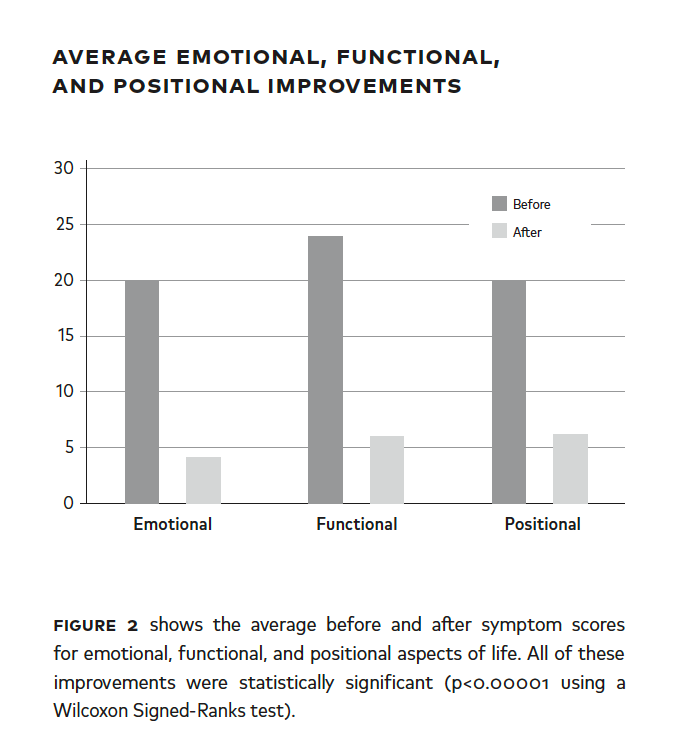
The medians, means (standard deviations) and Z scores are as follows:
emotional disability improved from 20, 21.0 (6.80) to 4, 6.96 (6.10), Z=-10.4;
functional disability improved from 24, 21.6 (7.89) to 6, 7.58 (6.74), Z=-10.2;
and positional disability improved from 20, 18.4, (8.44) to 6, 5.93 (5.22), Z=-10.1.
All of these improvements were highly statistically significant (p<0.00001) using a Wilcoxon Signed-Ranks test.
This a graph of the mean values for overall perceived disability score before and after ROCK STEADY.
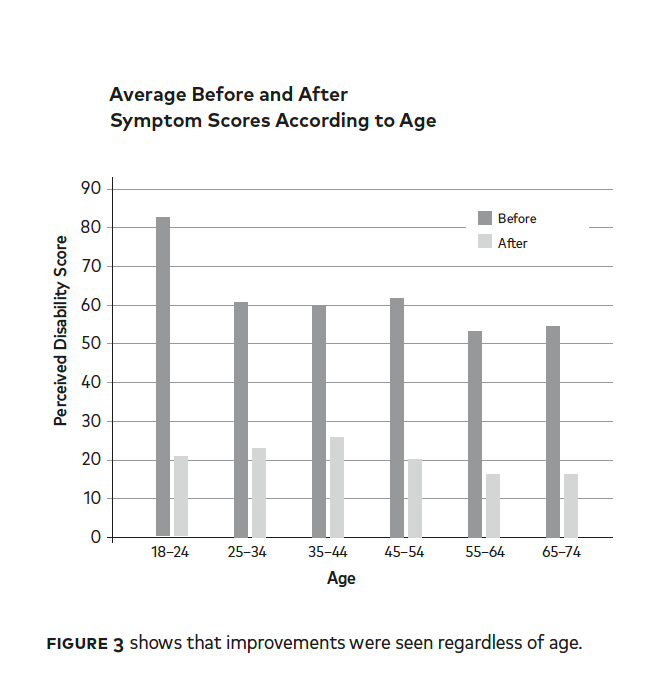
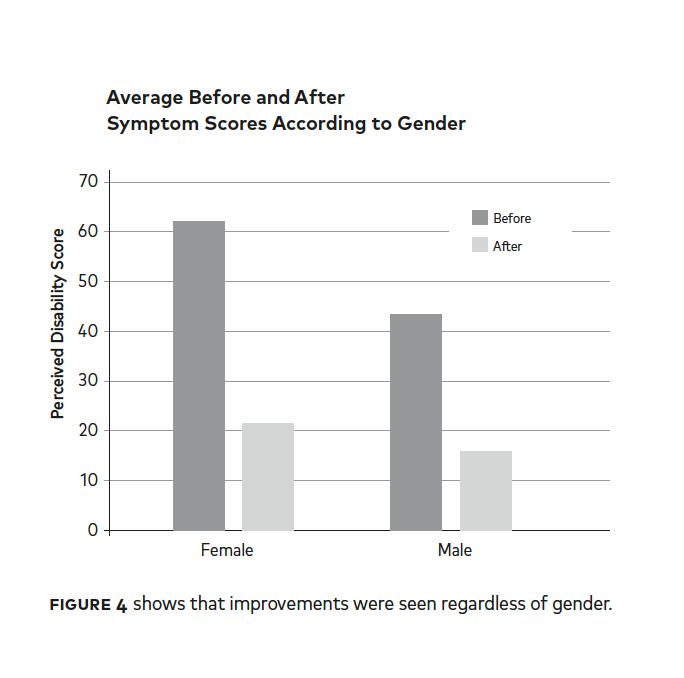
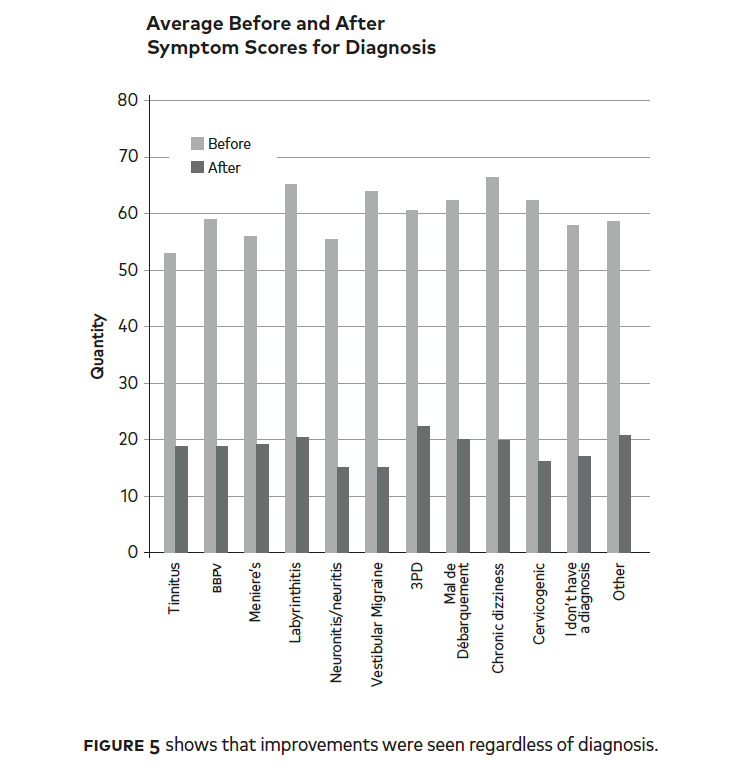
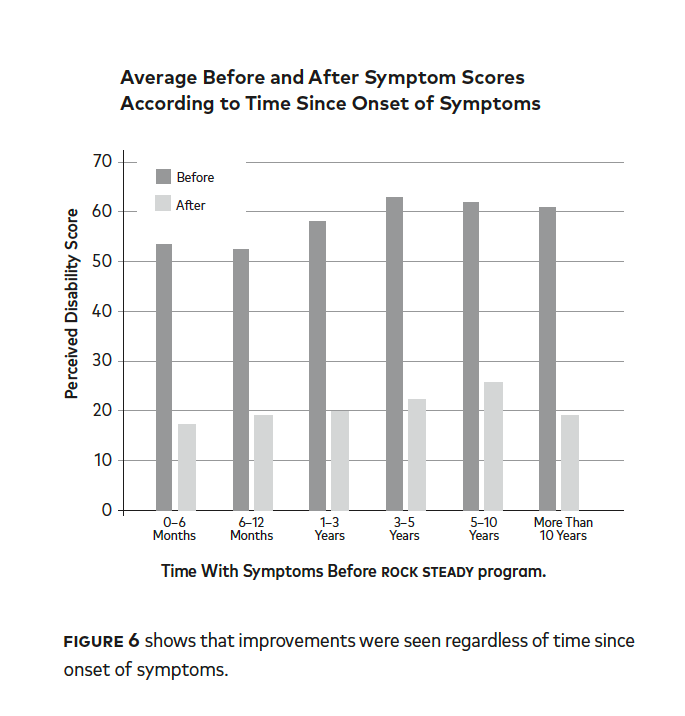
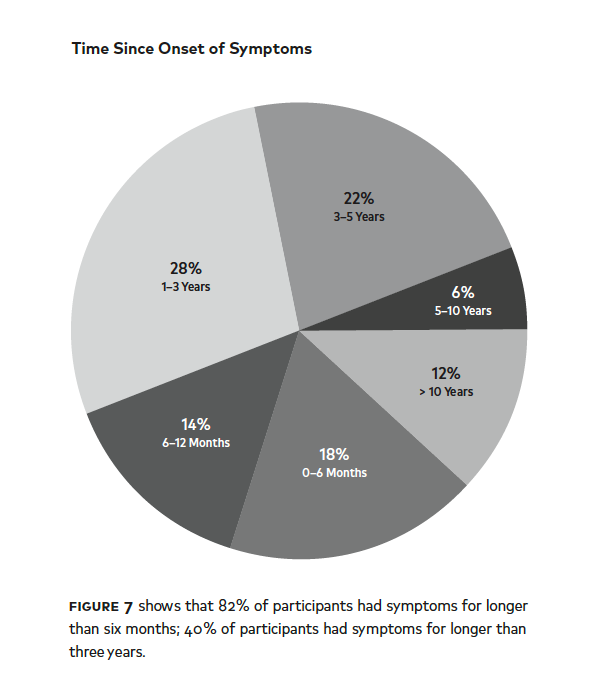
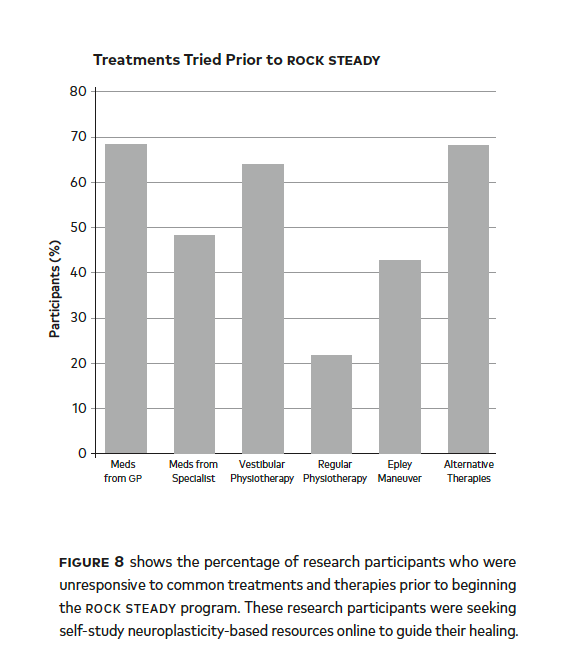
All scores used for analysis reflect a perceived disability in daily life from a standardised clinical questionnaire for vestibular sufferers called the Dizziness Handicap Inventory (1) . We adapted this questionnaire so that the word ‘dizziness’ was changed to ‘symptoms’ so that it could be used for clients who do not describe their symptoms as dizziness. This research design and methodology was adapted from Murray et al (2).
Conclusion
The results of this study show that completion of the six modules in ROCK STEADY resulted in significant improvement to perceived symptoms in all areas of life, positionally, emotionally and functionally. These improvements were seen regardless of age, gender, diagnosis and time since onset of symptoms. Despite chronic symptoms or having tried and not responded to many previous therapies, this research suggests there is still hope for audiovestibular sufferers seeking holistic self-study resources online.
NOTE FROM JOEY: for those of you currently doing the ROCK STEADY program, please inform your doctors about starting it and share your ongoing progress scores with them.
Thank you to everyone who has participated in completing questionnaires – I value your time and efforts.
*As of 30th March, 2020
- Jacobson G, Newman C. The development of the Dizziness Handicap Inventory. Arch Otolaryngol Head Neck Surg. 1990;116:424–427.
- Murray, K.J., Hill, K., Phillips, B., Waterston, J. (2010) “Does otolith organ dysfunction influence outcomes after a customised program of vestibular rehabilitation?”. J Neurol Physical Therapy, 34 (2): 70-75.
Who is Seeking Balance?
We collected descriptive statistics from a random 1077 people who were searching for online for vertigo or tinnitus support.
61% of people had been given two or more diagnoses. 14.3% of participants reported that they had never received a final diagnosis.
In our community, 51% of people report tinnitus, 49% report a vestibular condition without tinnitus, 32% of people report both symptoms of vertigo and tinnitus, and 19% of people report only tinnitus.
94% of people experienced a reduction in their quality of life because of their symptoms. 779 (72%) of participants were female and 297 (28%) were male. 471 (44%) of participants were under the age of 44 years; 494 (46%) of participants were aged between 45-64 years; 111 (10%) of participants were aged over 65 years.
414 (38%) of participants reported more than 3 years of symptoms; 253 (24%) reported symptoms for less than 6 months. The remaining 409 (38%) participants reported symptoms lasting from 6 months to 3 years.
Participants came from countries within the regions of Australasia, North America, Asia, Europe, South America and Africa.
AS SEEN IN
